硫化钠, 90%,Sodium sulfide
产品编号:西域试剂-WR362883| CAS NO:1313-82-2| MDL NO:MFCD00003498| 分子式:Na2S| 分子量:78.04
本网站销售的所有产品仅用于工业应用或者科学研究等非医疗目的,不可用于人类或动物的临床诊断或者治疗,非药用,非食用,
| 产品名称 | 硫化钠, 90% |
|---|---|
| 英文名称 | Sodium sulfide |
| CAS编号 | 1313-82-2 |
| 产品熔点 | 950 °C(lit.) |
| 产品沸点 | 174ºC |
| 产品密度 | 1.86 g/mL at 25 °C(lit.) |
| 精确质量 | 77.951607 |
| PSA | 25.30000 |
| 外观性状 | 多变色的晶体,带有一种令人厌恶的气味 |
| 溶解性 | 186 g/L (20 ºC) |
| 稳定性 | 1.遇酸反应,产生硫化氢。水溶液呈强碱性,故又称硫化碱。溶于硫黄生成多硫化钠。工业品因含杂质常为粉红、棕红色、土黄色块。有腐蚀性,有毒。在空气中易氧化生成硫代硫酸钠。吸湿性很强,在100g水中的溶解度为15.4g(10℃),57.3g(90℃)。微溶于乙醇,不溶于乙醚。 2.稳定性 稳定 3.禁配物 酸类、强氧化剂 4.避免接触的条件 空气 5.聚合危害 不聚合 |
| 储存条件 | 储存注意事项 储存于阴凉、通风的库房。远离火种、热源。包装密封。应与氧化剂、酸类分开存放,切忌混储。不宜长久,以免变质。配备相应品种和数量的消防器材。储区应备有合适的材料收容泄漏物。 |
相关文档
化学品安全说明书(MSDS)
下载MSDS质检证书(COA)
相关产品
| 符号 |
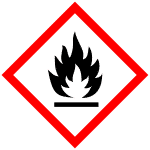

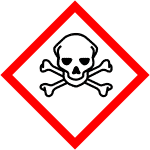
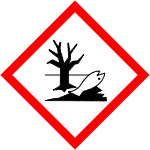
GHS02, GHS05, GHS06, GHS09 |
|---|---|
| 信号词 | Danger |
| 危害声明 | H251-H290-H301 + H311-H314-H400 |
| 补充危害声明 | Contact with acids liberates toxic gas., Corrosive to the respiratory tract. |
| 警示性声明 | P273-P280-P301 + P310 + P330-P303 + P361 + P353-P304 + P340 + P310-P305 + P351 + P338 |
| 个人防护装备 | Eyeshields;Faceshields;full-face particle respirator type N100 (US);Gloves;respirator cartridge type N100 (US);type P1 (EN143) respirator filter;type P3 (EN 143) respirator cartridges |
| 危害码 (欧洲) | C:Corrosive |
| 风险声明 (欧洲) | R31;R34;R50 |
| 安全声明 (欧洲) | S26-S45-S61 |
| 危险品运输编码 | UN 1849 8/PG 2 |
| WGK德国 | 2 |
| RTECS号 | WE1905000 |
| 包装等级 | II |
| 危险类别 | 4.2 |
| 海关编码 | 2830101000 |
Synonym:Sodium monosulfide; sodium sulfide anhydrous; sodium sulfide with < 30% water of crystallization; sodium sulphid Section 2 - COMPOSITION, INFORMATION ON INGREDIENTS
Risk Phrases: 31 34 50 Section 3 - HAZARDS IDENTIFICATION EMERGENCY OVERVIEW
Contact with acids liberates toxic gas. Causes burns. Very toxic to aquatic organisms.Corrosive.Hygroscopic (absorbs moisture from the air). Potential Health Effects Eye: Causes eye burns. May cause irreversible eye injury. May cause blindness. May cause chemical conjunctivitis and corneal damage. Skin: Causes skin burns. May be absorbed through the skin in harmful amounts. Prolonged and/or repeated contact may cause irritation and/or dermatitis. Contact with skin causes irritation and possible burns, especially if the skin is wet or moist. May cause skin rash (in milder cases), and cold and clammy skin with cyanosis or pale color. Ingestion: Harmful if swallowed. May cause severe and permanent damage to the digestive tract. Causes gastrointestinal tract burns. May cause perforation of the digestive tract. May cause cardiac disturbances. May cause systemic effects. Inhalation: May cause severe irritation of the respiratory tract with sore throat, coughing, shortness of breath and delayed lung edema. Causes chemical burns to the respiratory tract. May cause effects similar to those described for ingestion. Aspiration may lead to pulmonary edema. May cause systemic effects. Chronic: Effects may be delayed. Section 4 - FIRST AID MEASURES Eyes: Immediately flush eyes with plenty of water for at least 15 minutes, occasionally lifting the upper and lower eyelids. Get medical aid immediately. Do NOT allow victim to rub eyes or keep eyes closed. Extensive irrigation with water is required (at least 30 minutes). Skin: Get medical aid immediately. Immediately flush skin with plenty of water for at least 15 minutes while removing contaminated clothing and shoes. Wash clothing before reuse. Destroy contaminated shoes. Ingestion: Do not induce vomiting. If victim is conscious and alert, give 2-4 cupfuls of milk or water. Never give anything by mouth to an unconscious person. Get medical aid immediately. Inhalation: Get medical aid immediately. Remove from exposure and move to fresh air immediately. If breathing is difficult, give oxygen. Do NOT use mouth-to-mouth resuscitation. If breathing has ceased apply artificial respiration using oxygen and a suitable mechanical device such as a bag and a mask. Notes to Physician: Section 5 - FIRE FIGHTING MEASURES General Information: As in any fire, wear a self-contained breathing apparatus in pressure-demand, MSHA/NIOSH (approved or equivalent), and full protective gear. During a fire, irritating and highly toxic gases may be generated by thermal decomposition or combustion. Wear appropriate protective clothing to prevent contact with skin and eyes. Wear a self-contained breathing apparatus (SCBA) to prevent contact with thermal decomposition products. Extinguishing Media: For small fires, use dry chemical, carbon dioxide, water spray or alcohol-resistant foam. Section 6 - ACCIDENTAL RELEASE MEASURES General Information: Use proper personal protective equipment as indicated in Section 8. Spills/Leaks: Vacuum or sweep up material and place into a suitable disposal container. Clean up spills immediately, observing precautions in the Protective Equipment section. Avoid generating dusty conditions. Provide ventilation. Section 7 - HANDLING and STORAGE Handling: Wash thoroughly after handling. Wash hands before eating. Use only in a well-ventilated area. Do not get in eyes, on skin, or on clothing. Keep container tightly closed. Keep away from heat, sparks and flame. Do not ingest or inhale. Discard contaminated shoes. Storage: Store in a cool, dry place. Keep container closed when not in use. Store in a tightly closed container. Keep from contact with oxidizing materials. Keep away from strong acids. Store protected from moisture. Section 8 - EXPOSURE CONTROLS, PERSONAL PROTECTION Engineering Controls: Facilities storing or utilizing this material should be equipped with an eyewash facility and a safety shower. Use adequate general or local exhaust ventilation to keep airborne concentrations below the permissible exposure limits. Exposure Limits CAS# 1313-82-2: Personal Protective Equipment Eyes: Wear appropriate protective eyeglasses or chemical safety goggles as described by OSHA's eye and face protection regulations in 29 CFR 1910.133 or European Standard EN166. Skin: Wear appropriate protective gloves to prevent skin exposure. Clothing: Wear appropriate protective clothing to minimize contact with skin. Respirators: A respiratory protection program that meets OSHA's 29 CFR 1910.134 and ANSI Z88.2 requirements or European Standard EN 149 must be followed whenever workplace conditions warrant respirator use. Follow the OSHA respirator regulations found in 29 CFR 1910.134 or European Standard EN 149. Use a NIOSH/MSHA or European Standard EN 149 approved respirator if exposure limits are exceeded or if irritation or other symptoms are experienced. Section 9 - PHYSICAL AND CHEMICAL PROPERTIES Physical State: Solid Color: white to yellow Odor: rotten egg-like - weak odor pH: Alkaline in solution Vapor Pressure: Not applicable. Viscosity: Not applicable. Boiling Point: 346 deg F Freezing/Melting Point: 197 deg F Autoignition Temperature: Not applicable. Flash Point: Not applicable. Explosion Limits, lower: Not available. Explosion Limits, upper: Not available. Decomposition Temperature: Not available. Solubility in water: 15% @ 20C Specific Gravity/Density: 1.858 Molecular Formula: Mixture Molecular Weight: 0 Section 10 - STABILITY AND REACTIVITY Chemical Stability: Stable at room temperature in closed containers under normal storage and handling conditions. Conditions to Avoid: Incompatible materials, light, exposure to air, exposure to moist air or water. Incompatibilities with Other Materials: Metals, oxidizing agents, acids, carbon, moisture, diazonium salts. Hazardous Decomposition Products: Oxides of sulfur, hydrogen sulfide. Hazardous Polymerization: Has not been reported. Section 11 - TOXICOLOGICAL INFORMATION RTECS#: CAS# 1313-82-2: WE1905000 LD50/LC50: CAS# 1313-82-2: Oral, mouse: LD50 = 205 mg/kg; Oral, rat: LD50 = 208 mg/kg. Carcinogenicity: Sodium sulfide - Not listed by ACGIH, IARC, or NTP. Other: See actual entry in RTECS for complete information. Section 12 - ECOLOGICAL INFORMATION Ecotoxicity: Bacteria: Phytobacterium phosphoreum: EC50 = 4.29 mg/L; 15 minutes; Microtox test Section 13 - DISPOSAL CONSIDERATIONS Dispose of in a manner consistent with federal, state, and local regulations. Section 14 - TRANSPORT INFORMATION IATA Shipping Name: SODIUM SULPHIDE, ANHYDROUS Hazard Class: 4.2 UN Number: 1385 Packing Group: II IMO Shipping Name: SODIUM SULPHIDE, ANHYDROUS Hazard Class: 4.2 UN Number: 1385 Packing Group: II RID/ADR Shipping Name: SODIUM SULPHIDE, ANHYDROUS Hazard Class: 4.2 UN Number: 1385 Packing group: II Section 15 - REGULATORY INFORMATION European/International Regulations European Labeling in Accordance with EC Directives Hazard Symbols: C N Risk Phrases: R 31 Contact with acids liberates toxic gas. R 34 Causes burns. R 50 Very toxic to aquatic organisms. Safety Phrases: S 26 In case of contact with eyes, rinse immediately with plenty of water and seek medical advice. S 45 In case of accident or if you feel unwell, seek medical advice immediately (show the label where possible). S 61 Avoid release to the environment. Refer to special instructions/safety data sheets. WGK (Water Danger/Protection) CAS# 1313-82-2: 2 Canada CAS# 1313-82-2 is listed on Canada's DSL List. CAS# 1313-82-2 is not listed on Canada's Ingredient Disclosure List. US FEDERAL TSCA CAS# 1313-82-2 is listed on the TSCA inventory. SECTION 16 - ADDITIONAL INFORMATION N/A |

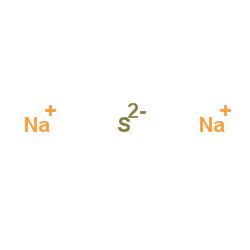

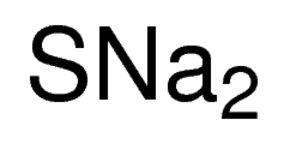





 浙公网安备 33010802013016号
浙公网安备 33010802013016号